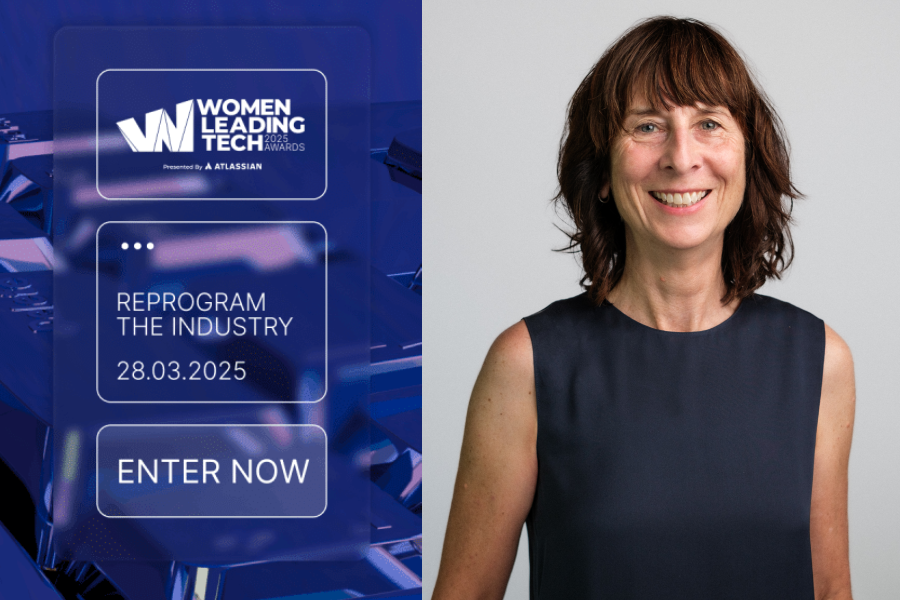Celebrating Women in Tech: A Journey of Change
As B&T prepares for the upcoming 2025 Women Leading Tech Awards, scheduled to take place in March 2025 and sponsored by Atlassian, Jeannette Laidlaw, the former lawyer and current Vice President of Global Customer Experience at SafetyCulture, reflects on the remarkable contributions of women in the technology sector alongside her own personal evolution in the field.
The Importance of Women Leading Tech Awards
The Women Leading Tech Awards aim to recognize excellence and drive transformation in an industry still grappling with gender diversity challenges. Although progress is evident, these awards are pivotal in highlighting role models and promoting inclusivity, advocating for a future where the acknowledgment of women’s contributions in tech is commonplace rather than an exception.
Opportunity to Vote
Voting is currently open for the Atlassian People’s Choice Award at the Women Leading Tech Awards. Make sure to cast your vote!
Transition from Law to Tech
B&T: How smooth was your transition from law to technology? What lessons did you carry over from your legal background?
Jeannette Laidlaw: My career journey is best described as “non-linear.” I began my career as an M&A lawyer in New York, where I was involved in integrating numerous acquisitions. M&A is fundamentally about navigating change and merging diverse teams, something I have always thrived on.
After holding legal positions across a range of industries, including music and fashion, I ventured into tech. The nature of the tech industry continuously evolves, offering new challenges and opportunities for growth.
My most significant career shift occurred during my time at Intuit in California when I transitioned from an in-house legal role into corporate development and subsequently into operational roles following one of Intuit’s acquisitions.
For women contemplating a career change, I recommend considering the context of your current company and team. Instead of leaving for new opportunities, explore internal mobility. This allows you to leverage established relationships, personal brand, and business knowledge.
Think of jobs like a pair of jeans: finding the perfect fit takes time and may require adjustments along the way.
Shifts in the Tech Landscape
B&T: How has the landscape for women in tech evolved since the Dot Com boom?
JL: When I started as a lawyer in New York, opting for pantsuits instead of skirts was seen as daring. Today, I comfortably wear jeans and sneakers to work, often with my sheepadoodle sidekick by my side. While this reflects some degree of progress, considerable disparities still prevail, particularly when it comes to women in senior executive or C-suite roles. Female founders often face significant hurdles in securing growth capital after initial funding stages.
Until we achieve parity in opportunity, representation, compensation, and funding, there is still much work to be done. The tech sector’s influence in Australia has notably increased, with a rise in successful homegrown startups and the possibility to occupy global tech roles from Australia—an unrealized dream two decades ago. Additionally, technology has fostered the emergence of more flexible, hybrid, and remote positions, benefiting women who may require such arrangements due to caregiving duties.
Pathways to Equality
B&T: What opportunities exist for skills training and economic equality for women in this sector?
JL: Companies must tackle multiple elements to ensure equitable opportunities for women in tech, including closing the gender pay gap, enhancing parental leave policies, and supporting women returning after career breaks. However, some challenges stem from deeply rooted societal norms regarding unpaid labor and caregiving that disproportionately affect women.
While businesses must recognize their influential role, it is crucial to understand that these issues require broader societal engagement.
Driving Positive Changes in Tech
B&T: Based on your extensive global experience in tech roles, how can positive changes be implemented within the industry?
JL: Research indicates that inclusive workplaces yield superior outcomes in employee satisfaction, innovation, and business performance. The focus should be on ensuring that efforts towards diversity and inclusion are both effective and sustainable in the long run.
Organizations should adopt an iterative approach to these initiatives, treating them like product development—test, learn, and refine. I’ve seen that a culture of belonging flourishes when everyone feels heard and valued, and creating spaces for open conversations is essential for meaningful progress.
Advice for Women Entering Tech
B&T: What words of wisdom do you have for women entering the tech industry today?
JL: Remember, this is a long-term journey—you don’t need to rush. There will be moments when you may need to adapt your career to accommodate other aspects of your life. Seek out inspiring women with diverse experiences and learn from them. Identify what you value in a role—whether it’s purpose, flexibility, or mobility—because finding that ideal fit is essential.
Don’t hesitate to seek help, share your expertise, and uplift others in both professional and personal realms. The strength found in community, such as a mother’s WhatsApp group, should never be underestimated.


